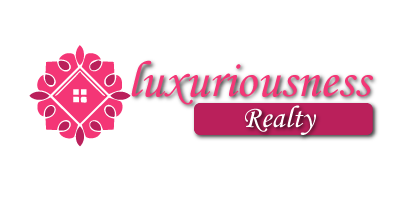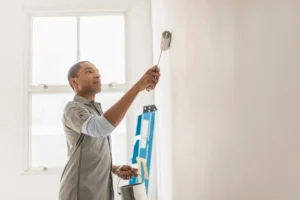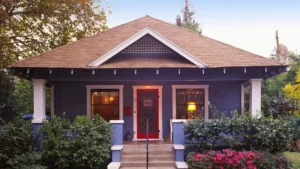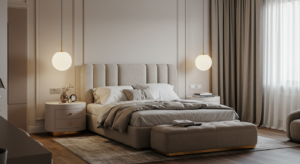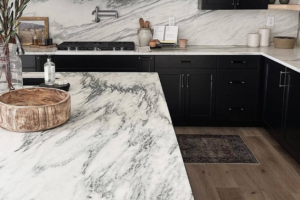Imagine this: you come home after a long day, unlock the door, and enter your entryway. Instead of a cluttered drop-zone of shoes, bags, and jackets, you’re greeted by a space that feels organized, welcoming, and uniquely you. The warm glow of a pendant light illuminates a sleek console table where you drop your keys. A vibrant artwork catches your eye, setting the tone for the rest of your home. This isn’t just an entryway—it’s a perfectly designed foyer that marries function with style, creating a seamless transition between the outside world and your sanctuary.
The entryway, or foyer, is often overlooked, yet it serves as the first impression of your home. Whether you’re welcoming guests or simply stepping inside after a busy day, the design of your entryway sets the tone for the rest of your house. It’s a small but mighty space that can significantly influence how you and others feel upon entering. In recent years, more homeowners have begun to prioritize foyer design, realizing that a well-organized and aesthetically pleasing entryway boosts functionality and elevates the entire home experience. In this article, we will explore fundamental entryway and foyer design principles, backed by statistics and expert insights, to help you create an inviting and practical entryway.
The Role of the Entryway in Home Design
Often called the “transitional” space between the exterior and interior, the entryway is more than just a pass-through area. It serves three main functions: it is a drop-off zone, a welcome point, and a space to transition between the outside world and the personal sanctuary of your home.
According to a National Association of Home Builders (NAHB) study, 62% of homebuyers consider an entryway or foyer a desirable feature. The entrance space doesn’t have to be large but should be well-planned to provide visual appeal and utility. Whether your foyer is spacious or compact, a thoughtful design can make this area functional and stylish.
Critical Elements of Entryway Design
To craft the perfect foyer, several key design elements come into play: lighting, storage, furniture, and decor. Each serves a distinct purpose but should work harmoniously to create a cohesive and inviting space. Here’s how to approach each aspect:
- Lighting: Setting the Mood
Lighting is one of the most essential elements of entryway design. Since the foyer is often windowless or lacks natural light, the proper lighting can help make the area feel warm and welcoming rather than dark and cramped.
- Statement Lighting: A well-chosen light fixture can be a focal point in your entryway, enhancing both function and style. Chandeliers, pendant lights, or modern ceiling fixtures can add a touch of elegance or drama to the space. In a 2023 survey by Houzz, 45% of homeowners who remodeled their entryways invested in new lighting, with many opting for bold, statement pieces that enhance the atmosphere.
- Layering Light: If the space allows, adding layers of light can enhance the ambiance of your entryway. A mix of overhead and accent lights—such as sconces or table lamps—creates depth and warmth. Soft lighting, especially in the evening, can create a cozy, inviting vibe, ensuring the space doesn’t feel too harsh or industrial.
- Storage Solutions: Organization Meets Aesthetics
The entryway is the first point of contact with the home, and it’s often where items like shoes, bags, and coats are dropped. Therefore, practical storage solutions are vital to keeping the space tidy and functional. According to the National Association of Realtors, homes with organized entryways—featuring well-designed storage options—are perceived as 20% more valuable simply because they make daily life easier.
- Built-in Storage: If space allows, built-in storage like a bench with hidden compartments, cabinets, or custom closets can provide a sleek solution for storing everyday essentials like shoes, umbrellas, or bags. This maximizes space and keeps items out of sight, contributing to a clutter-free environment.
- Hooks, Shelves, and Racks: For smaller entryways, wall-mounted hooks, shelves, and shoe racks can be lifesavers. Decorative hooks can serve as functional and stylish elements while floating shelves offer a place to display decor or store smaller items like keys or mail.
- Console Tables: Console tables are another functional piece that can double as a display area for decor and a storage solution for small entryway necessities. According to a 2022 report by Furniture Today, 35% of homeowners who updated their entryway chose to add a console table for aesthetic and practical purposes.
- Furniture: Balancing Function and Aesthetics
Furniture choices in an entryway should be both functional and stylish. Since this space is often tiny, selecting furniture that serves multiple purposes is critical.
- Entryway Bench: An entryway bench provides a place to sit while putting on shoes and offers additional storage if it has built-in compartments or drawers. According to Houzz, 38% of homeowners who remodeled their foyers in 2022 included a bench in their design, appreciating its dual functionality.
- Mirror: Adding a mirror to your entryway serves multiple purposes. First, it makes the space feel larger by reflecting light. Second, it provides a convenient spot for last-minute touch-ups before heading out the door. In a Statista survey, 28% of homeowners added a mirror to their entryway redesign, recognizing its utility and ability to enhance the sense of space.
- Decor: Personalizing the Space
While functionality is essential, the entryway is also an opportunity to make a style statement and introduce guests to your home’s personality. Whether through art, plants, or decorative accents, this space offers a canvas for creative expression.
- Artwork and Wall Decor: Adding artwork, photographs, or a gallery wall can give your entryway character and make it feel like an intentional part of the home rather than an afterthought. A 2022 report from Wayfair revealed that 31% of people updating their entryway included new wall decor to add personality and warmth to the space.
- Rugs: A well-chosen rug can define the entryway space, add texture, and help trap dirt from shoes before it gets tracked into the rest of the house. Opt for rugs made of durable materials like jute or wool that can withstand the high traffic typical of an entryway.
- Greenery: Incorporating plants or flowers in your foyer can liven up the space. Studies published by The Journal of Environmental Psychology have shown that adding greenery to your home can reduce stress and improve mood. A simple plant on the console table or a larger potted plant in the corner can create a natural and refreshing feel to the space.
Designing for Different Types of Entryways
Not all entryways are created equal, and the design should reflect your space’s size, shape, and layout. Here are some tailored solutions for different types of foyers:
Small Entryways
In smaller homes or apartments, the entryway may be little more than a narrow corridor or a nook. However, small spaces don’t have to lack style or function. Vertical space, such as adding hooks or shelving, can maximize storage without cluttering the floor area. Slim furniture, like a narrow console table, can provide a surface for essentials without crowding the room. A large mirror will also make a smaller entryway more spacious and open.
Large Foyers
If you’re lucky enough to have a spacious foyer, you have more room to play with more prominent design elements. A large entryway allows for more substantial furniture, such as a statement bench or an expansive console table. You can also experiment with bold decor, such as an oversized piece of art or a dramatic chandelier. For large foyers, consider using an area rug to center the space and create a more defined area.
Entryway Design Trends for 2024
Entryway Entrance Foyer design trends continue evolving, with new ideas focusing on aesthetic beauty and environmental consciousness. Here are some of the trends to watch in 2024:
- Sustainable Materials: As homeowners become more environmentally conscious, using sustainable materials in entryway furniture and decor is rising. According to Architectural Digest, 60% of new design projects 2023 incorporated eco-friendly materials like bamboo, reclaimed wood, or natural fibers into entryway design.
- Smart Storage Solutions: As homes become more connected, expect to see an increase in intelligent storage solutions for entryways, like keyless entry cabinets, charging stations built into consoles, and motion-sensor lighting. A survey from Smart Home World in 2022 found that 40% of homeowners are incorporating innovative technology into their foyer designs.
- Minimalist Decor with a Personal Touch: The minimalist trend continues with a twist. In 2024, expect clean lines and clutter-free spaces paired with more personalized touches, like family photos, heirlooms, or unique artisan pieces.
Conclusion: Designing an Entryway That Works for You
Your entryway is the gateway to your home—it is the first thing you see when you walk in and the last space you pass through before leaving. By combining functionality with style, you can create a space that serves a practical purpose, reflects your personality, and enhances the overall experience of your home. From carefully chosen lighting and storage solutions to thoughtful decor and personalized touches, every element of your entryway can be designed with intention. Whether your space is small or large, your foyer can become more than just a transition area—a welcoming and beautiful first impression of your home.
